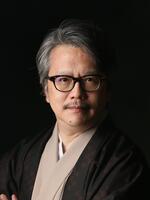Research Experience
-
2016.04-Now
Waseda University Faculty of Human Sciences Professor
-
2016.04-Now
Hmamatsu University School of Medicine
-
2014.10-Now
Director, Waseda Institute of Medical Anthropology on Disaster Reconstruction
-
2007.04-2016.03
Associate Professor, Faculty of Human Sciences, Waseda University
-
2013.04-2014.03
Research Fellow, Harvard Program in Refugee Trauma, Massachusetts General Hospital Psychiatry
-
2003.04-2006.03
Associatte Professor, Faculty of Human Sciences, Waseda University
-
2002.04-2004.03
Kyoritsu Women's University Faculty of Home Economics
-
2001.04-2004.03
Hamamatsu University School of Medicine (Public Heatlh) Faculty of Medicine
-
2002.04-2003.03
Waseda University Graduate School of Letters, Arts and Sciences
-
2002.01-2002.05
The University of Tokyo Psychomatic Medicine, Faculty of Medicine University Hospital
-
1999.04-2001.12
Head of the Department of Medical Care, KENSEIKAI Clinic, Psyciatry & Psycho-somatic Medicine
-
1994.06-1997.03
Legal Medical Officer, Kanto Medical and Juvenile Training Institute
-
1992.05-1994.05
Clinical Resident, Tokyo Metropolitan Police Hospital, Internal Medicine


Click to view the Scopus page. The data was downloaded from Scopus API in May 15, 2024, via http://api.elsevier.com and http://www.scopus.com .